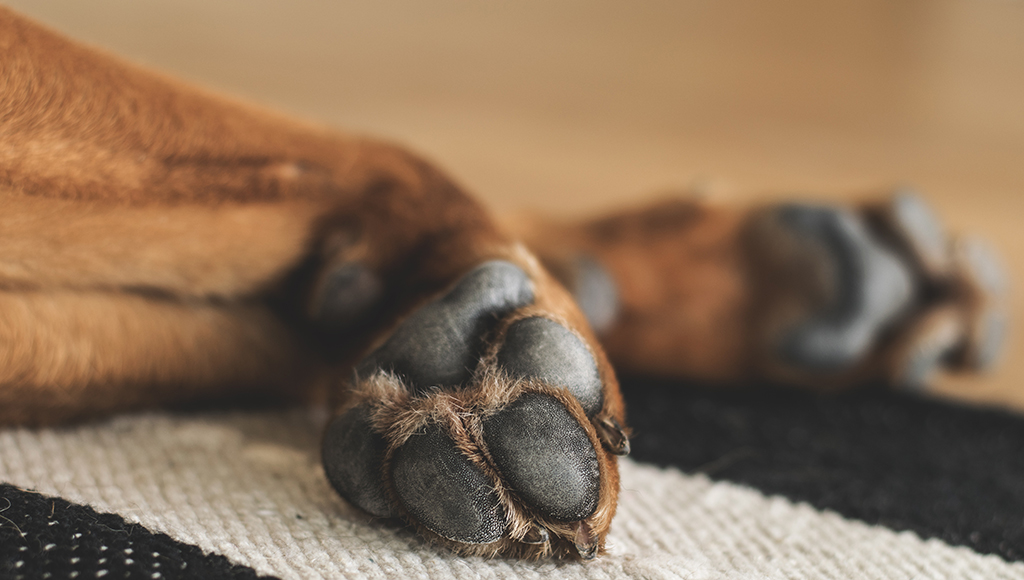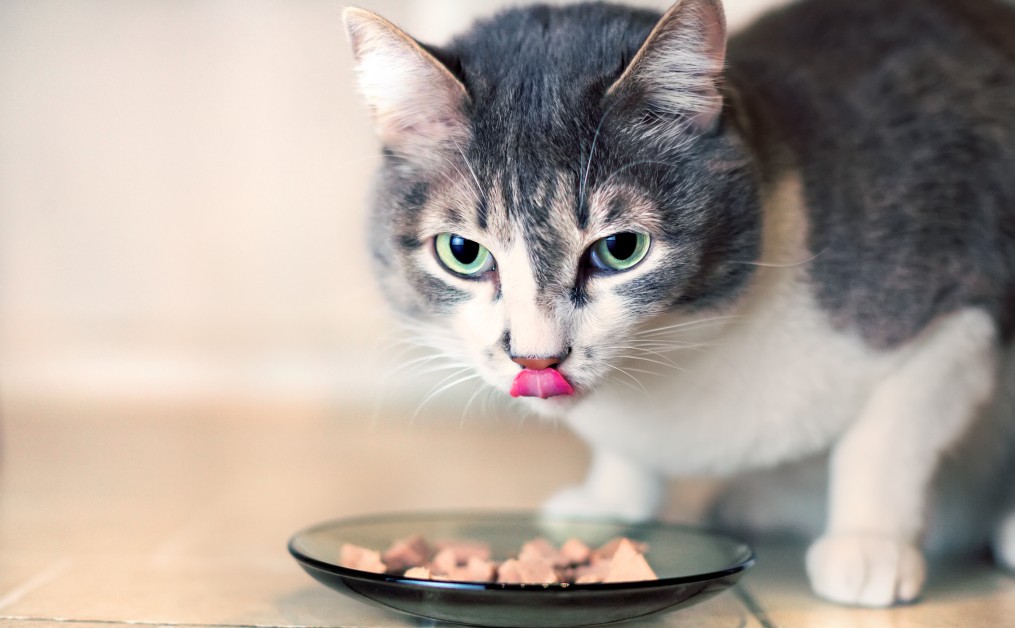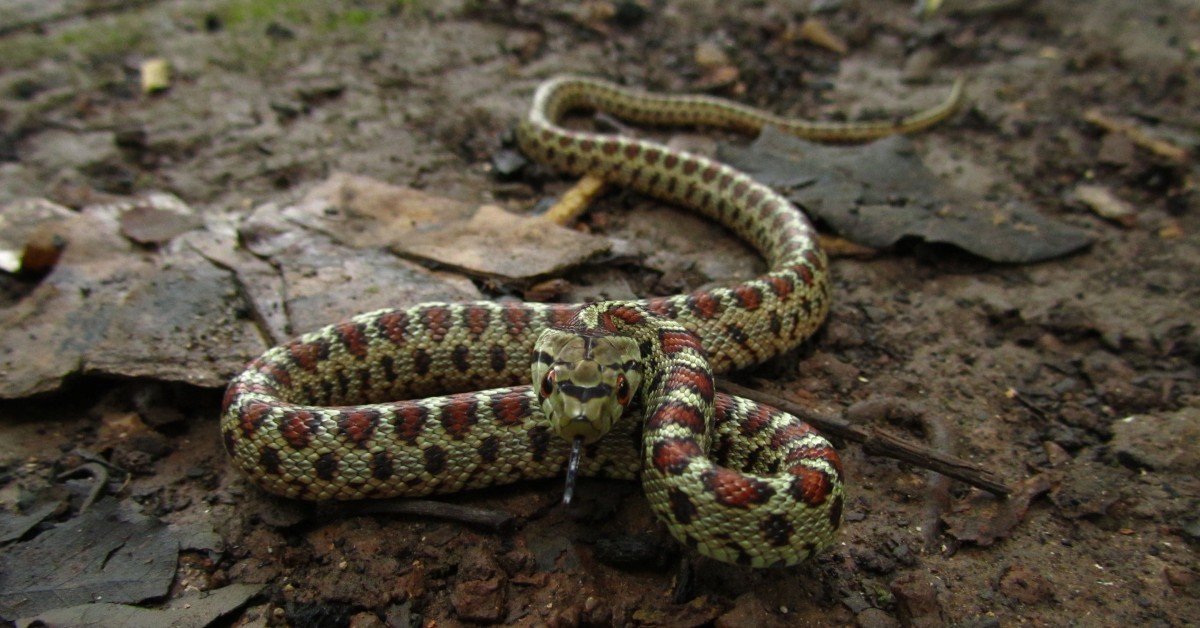Dog Paw Problems
Learn how to recognize and treat the most common dog paw problems, and how to prevent and treat injuries and infection.

Dog paws are the toughest part of a dog’s feet and absorb the shock and pressure on his joints from standing, walking and running. Due to their function, dog paws are prone to injury and infection. Dog paw care should be a part of your regular care routine. A brief inspection of checking between your dog's toes and paw pads to make sure they are clean and free of mud, dirt, and debris after prolonged outdoor activity, and routinely as part of regular grooming, will help keep your dog's paws healthy.
Common Causes of Unhealthy Dog Paws
Unhealthy dog paws could be causing your pet pain and discomfort, and could also be signs of a bigger health issue. Below are some of the most common causes of dog paw problems:
- Bacterial infection
- Yeast infection
- Flakes/dandruff
- Hot spots
- Burns (often caused by hot pavement)
- Paw pad injury
- Snow and ice melts
- Ticks and parasites
- Blisters and sores
- Cysts/growths
- Allergies
- Ringworm
- Insect bites
- Object stuck in their paw
- Mites
- Overgrown/injured toenails
Why Is My Dog Licking and Chewing His Paws?
One of the most common signs of unhealthy dog paws is excessive licking and chewing. When a dog licks their paws, it could be a part of normal grooming - or a sign that something is wrong, such as a dog paw infection, burns, paw pad injury, or insect bite. If you notice your dog licking his paws more than normal, a closer inspection and/or visit to the vet might be warranted.
Dry, Cracked Dog Paw Pads
Your dog's paw pads are naturally rough. They have to so he has traction when he needs to turn quickly, sprint off and stop quickly. If the pads become cracked they are prone to collect dust and debris, which can cause further injury to the pad. Pads can be moisturized using a special dog paw cream. Try to avoid using human hand moisturizer as this tends to soften the pads too much and makes them prone to injury.
Signs of a Dog Paw Pad Injury
Typical paw injuries include abrasions, lacerations, punctures, burns and blisters to the footpad, dry, cracked pads and foreign objects lodged between the toes.
- bleeding paws
- limping
- holding the injured paw off the ground
- discoloration of the pad (difficult to see if the paws have a very dark pigmentation)
- excessive licking and/or chewing of the paw.
If your dog is showing any of these symptoms, then you'll want to identify what is causing the problem. Be extremely careful handling an injured dog, even the most mild mannered dog can bite if he's in pain and feels threatened by your touch. Putting a muzzle on your dog is a good way to protect yourself from a bite.
Treating Dog Paw Injuries
Dog paw pads contain a great number of blood vessels, so even a superficial paw cut can result in what seems like a serious amount of bleeding. The bleeding should stop relatively soon after you've treated the wound; if it doesn't, then contact your vet.
For abrasions and small cuts, clean the wound yourself with an anti-bacterial wash (chlorhexidine diluted with water will suffice) and wrap the paw with a light bandage. You will want to stop your dog from licking and chewing at the bandage - a good way to do this is to put an Elizabethan collar around his neck for a few days. Your dog sweats through his footpads, so the bandage will become moist within a couple of days. Moist bandages slow down the rate of healing and can result in infection, so you should change the bandage every two to three days.
If the wound doesn’t heal within a few days, contact your veterinarian. With deep paw lacerations, your vet will need to suture (stitch) the pad, bandage it and probably apply a splint. Without the splint, every time your dog puts his paw to the ground, the pad will spread due the weight of your dog's body being applied to the paw, and it's likely that the cut will open up again.
Preventing Dog Paw Injuries: Burns, Blisters, and Red Paws
Your dog's feet can easily burn and blister as a result of walking on a hot pavement or through hot sand. If you look at your dog's pad there will either be a loose flap of the pad itself or the flap will have detached, leaving a red ulcerated patch. The best thing you can do is to apply anti-bacterial wash and cover the paw with a bandage until the pad has healed. If your dog has a loose flap of pad you'll need to wait for this to come off, which it will do on its own or you can ask your vet to trim it off.
Check your dog's paws for foreign objects between the toes
The most common culprits are burrs, small stones and pieces of glass, dried mud and also your dog's matted fur. These can usually be removed with a pair of tweezers and matted fur can be trimmed back.
When a Dog Paw Injury is Serious Enough to Go to the Vet
Always contact your vet if you are:
- unsure of the cause of the injury
- are not comfortable treating your dog's injury yourself
- the wound does not appear to be healing
- if your dog's paw becomes swollen
Your vet will either recommend further treatment to carry out at home or suggest you visit the clinic.
How to Prevent Unhealthy Dog Paws
Sometimes accidents will happen, but you can reduce the risk of injury to your dog’s paw pads by keeping your home and yard clear of sharp objects and rough debris. Take care when you are out to avoid hazards such as broken glass and other debris on pavements, walking on gravel areas for a long period of time, hot pavements in the summer and road salt in the winter.
The best way to think about this is to ask yourself if you would be happy walking barefoot on that ground. If not, don't make your dog walk on it.
Ready to start saving money on pet wellness care?
Then take a look at Mint Wellness, the pet wellness plan that provides fast reimbursement on routine pet care. Save on vaccinations, wellness exams, preventatives, dental, and more!
Learn More


